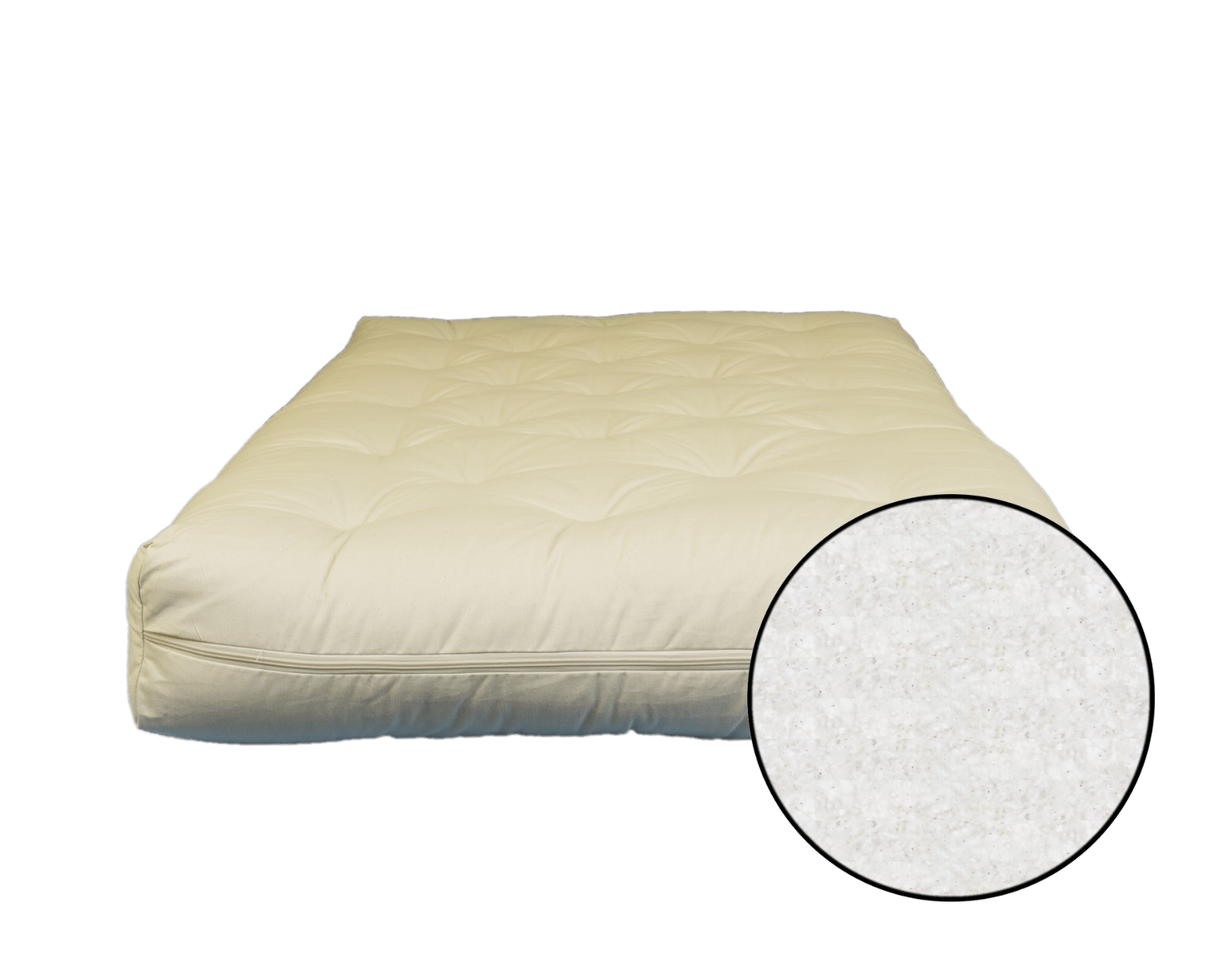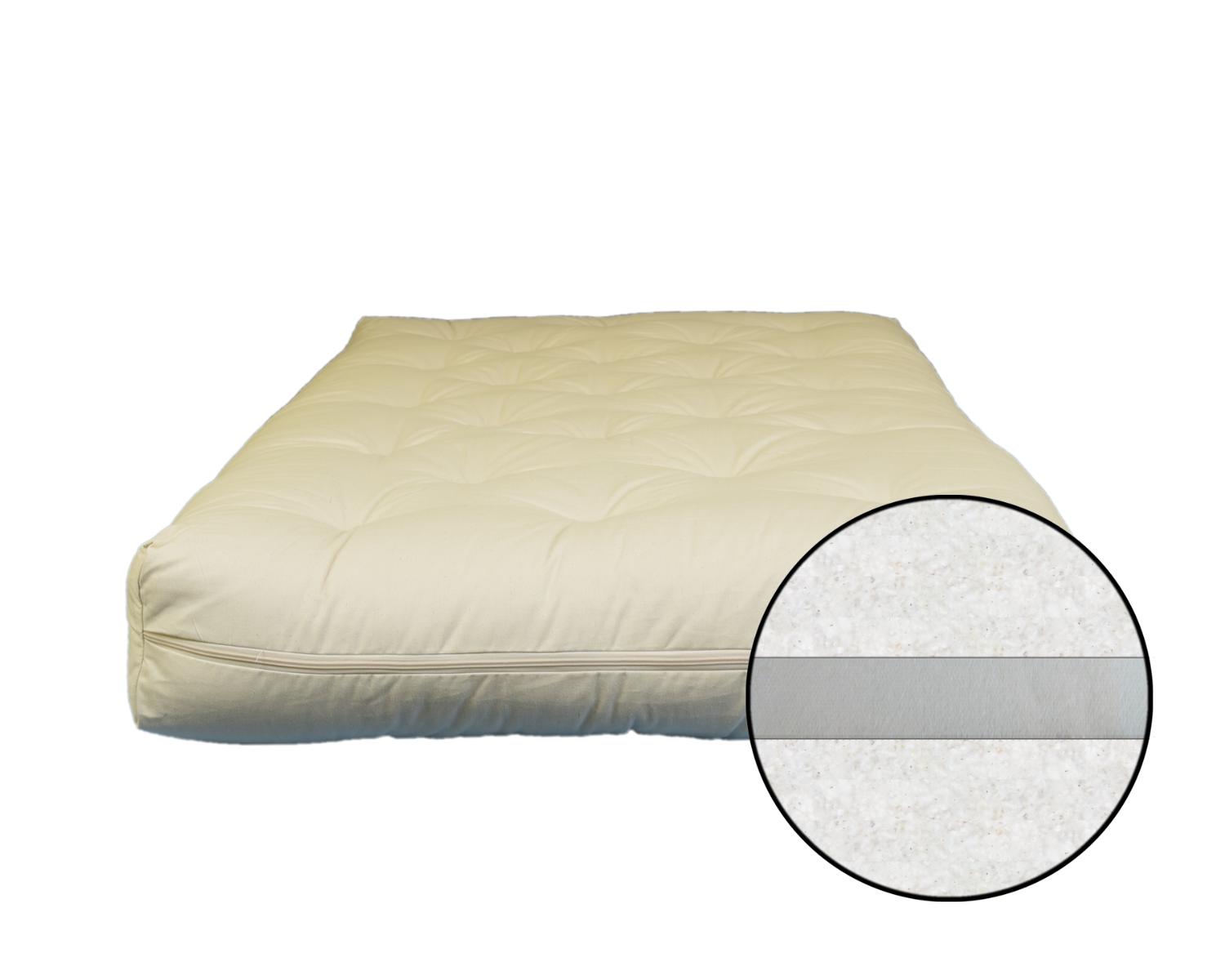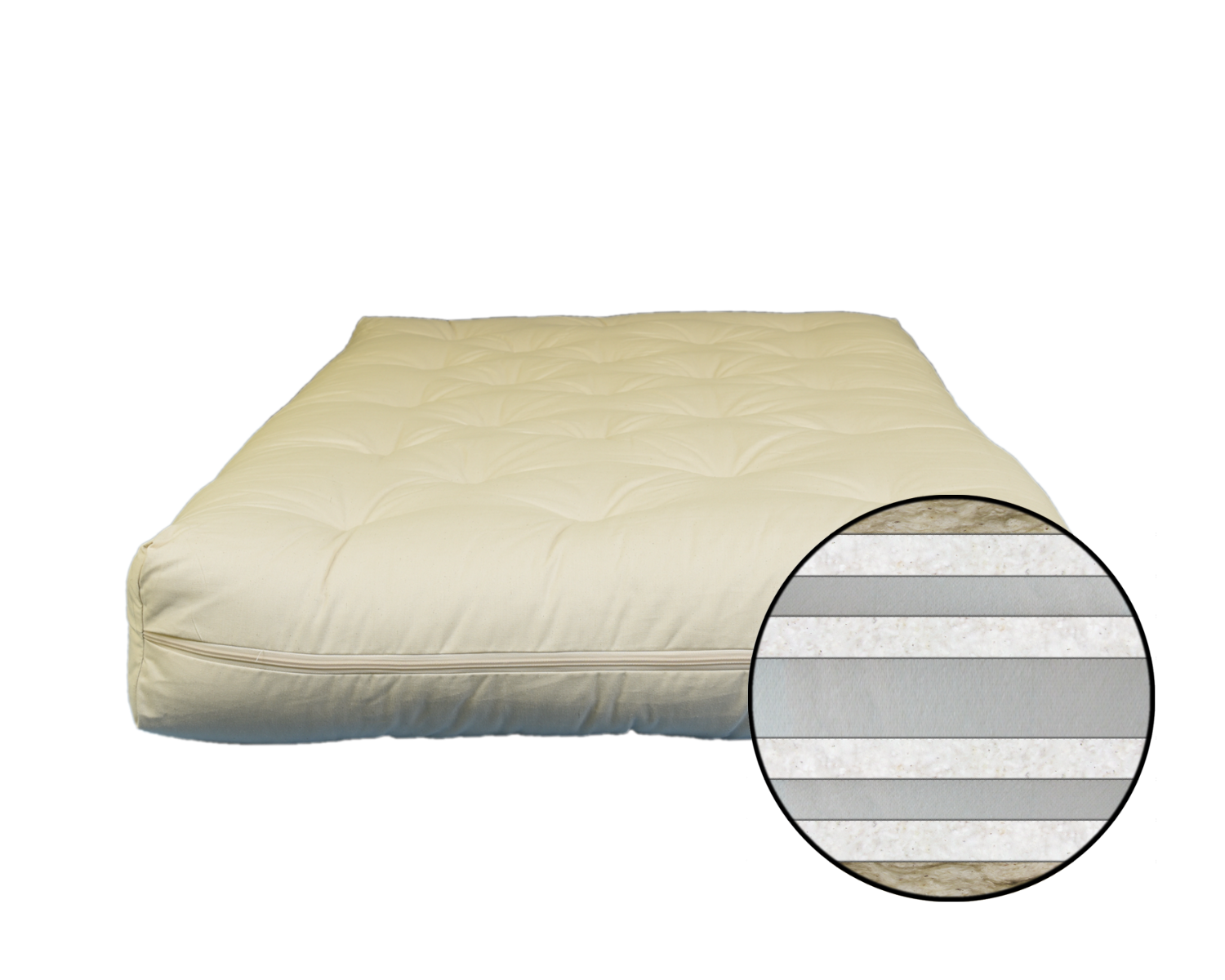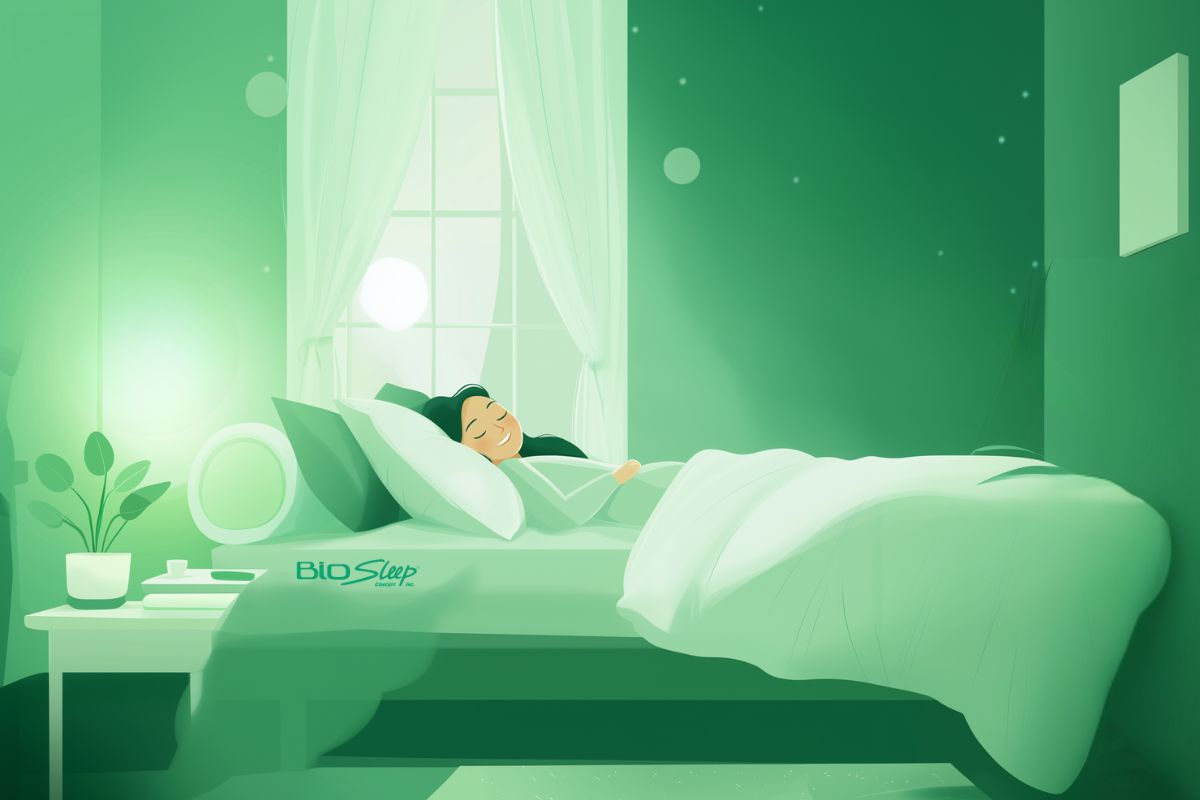Mother nature has bestowed upon us millions of gifts that we use every day to survive on this planet. However, far from being grateful, we human beings have upset the delicate balance of nature significantly, as a result of which we are facing rapid extinction of many species in the world.
This is the result of the destruction of wildlife and plant populations all over the globe, which are directly linked to some human activities such as deforestation, climate change, unsustainable agricultural practices, poaching, usage of chemical pesticides, and many more.
While it may look like a colossal task to reverse the damage to the environment, one little step at a time can help the planet recover drastically over time. Small actions like having a sustainable lifestyle, sleeping on a non-toxic mattress, eating mostly vegan meals, and using less plastic can help restore nature’s balance.
How Toxic Mattresses are Ruining Our Health and the Ecosystem?
We spend 2,500 hours every year sleeping. The hours are exceptionally high for newborn babies and toddlers. These statistics show nothing but the immense importance of creating and nurturing a safe and healthy sleep environment. The most significant contributor to our sleep environment is the mattress on which we sleep. While they might look harmless enough, you’ll be surprised to know the kind of negative impact regular, traditional mattresses have on the environment and our health.
A regular mattress is a major source of dust mites, EMFs, and toxic flame retardants.
1. Flame Retardants and other Toxic Chemicals:
Most of us are unaware of the fact that mattresses are one of the most common sources of chemical exposure. Mattress manufacturing companies are not required to declare all the chemicals that they use to prevent the mattress from catching fire.
Most manufacturing companies use polybrominated diphenyl, also known as PBDE, a toxic flame retardant chemical, on the mattresses to make them withstand an open flame from a blowtorch for over a minute. However, these chemicals are very harmful to our health and have been banned in Europe, Canada, and even some parts of the US.
Exposure to PBDEs through the skin and inhalation has been associated with brain, reproductive, and hormone damage in adults as well as children. Apart from PBDEs, many other toxic compounds like Volatile Organic Compounds, Formaldehyde, and other brominated flame retardants are also used during the manufacturing process of traditional innerspring mattresses.
2. Exposure to Electromagnetic Frequencies:
While it may sound a little crazy, it is a fact that using spring mattresses will expose you to high electromagnetic frequencies. An article published in the Scientific American claims that sleeping on spring and coil mattresses might be the reason behind the rising number of melanoma and breast cancer cases in the West. Thankfully, there are several non-toxic mattresses made from organic and natural materials that can be used without harming the environment or exposing our body to high levels of EMF.
3. Emission of Toxic Gases:
Many toxic synthetic materials are used to manufacture the traditional mattresses currently available in the market. Therefore, the environment has to bear the brunt of these toxic chemicals twice – once when the mattress is made and then again when it is dumped after years of use.
 From toxic glues to highly dangerous polyfoam or polyurethane foam, these synthetic chemicals contain a high range of VOCs or volatile organic compounds. As suggested by the name, VOCs are emitted from every bedroom which houses a coil spring mattress. This, in turn, increases the VOC concentration inside the house, making it ten times higher than it is outside.
From toxic glues to highly dangerous polyfoam or polyurethane foam, these synthetic chemicals contain a high range of VOCs or volatile organic compounds. As suggested by the name, VOCs are emitted from every bedroom which houses a coil spring mattress. This, in turn, increases the VOC concentration inside the house, making it ten times higher than it is outside.
These chemicals in the new non-organic mattresses not only contribute to air pollution but also adversely affect our health. This is the reason why mattress companies suggest that customers should air out a newly purchased coil-spring mattress before putting it down on the bed frame. However, airing out these mattresses laden with chemicals outside the house would then lead the VOCs to be emitted directly into the atmosphere, thus harming the environment significantly.
4. Use of Synthetic Materials:
When it comes to shopping for bedding, two main factors dominate our final decision – price and comfort. Sadly, mattresses made out of synthetic materials fulfill both of these conditions as mentioned earlier. It is much more cost-effective to produce synthetic materials, and technology has made it possible to manufacture a coil-spring mattress that is very comfortable for all body types.
However, the negative impact that these synthetic materials have on the environment during the manufacturing process and after they have been disposed of is immense. Not only that, but these materials are also very harmful to our health, which is why physicians are increasingly advising people to opt for non-toxic mattresses made from organic materials like wool, cotton, and natural latex.
Here are some of the problems you will face from prolonged use of mattresses made out of synthetic materials.
- Substandard Breathability:
Synthetic bedding materials do not allow adequate air flow between the layers, leading to poor temperature control and a feeling of suffocation. This directly affects our sleep patterns and health.
- Pesticide Exposure:
Using a mattress made from cotton or wool is not the same as going organic, as most of the cotton in the world is farmed using non-organic methods, which means pesticides are used in abundance on the crops. Similarly, not all sheep are reared using organic methods. Many synthetic materials also use several chemicals which affect not only our health but also the environment.
- Allergic Reactions:
Thanks to the wide range of chemicals used to manufacture inorganic, toxic, synthetic materials, it can trigger some allergic reactions in the users and can also cause skin reactions in people with sensitive skin.
However, worry not as the market is filled with eco-friendly, non-toxic mattresses that reduce the negative impact traditional synthetic mattresses have on the environment.
Things to Looks for in an Organic Non-Toxic Mattress
While sleeping on a safe, organic, and non-toxic mattress must be a priority, it is also important to find an environment-friendly mattress that offers maximum comfort and support to the body. Here are some of the things you must look for while buying a non-toxic mattress made from organic materials.
1. Comfort:
It is very natural to feel tired and sore after a hectic day at work. Whether you are involved in a physically demanding profession or have to sit for long hours in front of a computer, the body gets tired and sore, albeit at different levels of intensity depending on the nature of the job. However, there is nothing more healing and refreshing than a good night’s sleep.
Sound REM sleep can be a rejuvenating experience, giving the body ample time to recover from the day’s hard work. There are several types of natural, eco-friendly mattresses made from organic wool, cotton, latex, etc. These bedding materials are not only non-toxic but also very comfortable, providing ample spinal support for quality REM sleep.
2. Industry Standard Labels:
If the mattress bears labels like “eco-friendly,” “non-toxic,” and “organic,” do not be fooled by them. Such labels do not represent true industry standards, and the product might not be organic as advertised by the manufacturer or distributor. Unlike labeling in the food and beverage industry, which is strictly monitored, mattress manufacturers can label their mattress organic even if it contains a tiny percentage of organic material like cotton or wool.
Therefore, you should look out for legitimate organic certifications which ensure that it is a non-toxic mattress made from eco-friendly and natural materials. Some of the certifications that you should look for while buying organic, non-toxic mattresses are the LGA certification, USDA, GOLS and GOTS, OEKO-TEX® Certification, and CertiPUR-US® Certification. These certifications guarantee that the materials used in the manufacturing process are truly natural and organic and that no harmful chemicals have been used.
In Conclusion:
The amount of damage that nature has sustained through long years of human abuse cannot be rectified by celebrating Earth Day once a year. We have to adopt a sustainable and eco-friendly lifestyle to save our planet. Using environmentally friendly, non-toxic mattresses is a small but significant step towards lowering the amount of toxicity and pollution that we leave behind. So, this Earth Day, choose an organic mattress to save our planet from further pollution.








